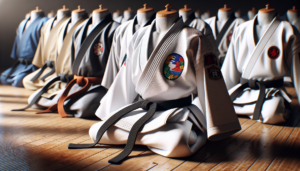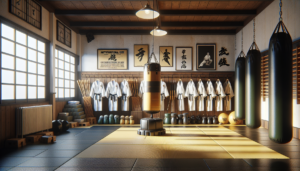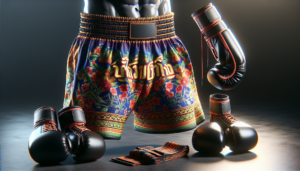Introduction to Aikido
Aikido is a Japanese martial art that has captivated practitioners around the world with its philosophy of peaceful conflict resolution and effective self-defense techniques. Founded by Morihei Ueshiba in the early 20th century, Aikido has evolved into a globally recognized practice that welcomes individuals of all ages, sizes, and backgrounds. At its core, Aikido aims to redirect an attacker’s energy, neutralizing aggression without causing harm.
The Origins of Aikido
Aikido’s roots can be traced back to traditional Japanese martial arts, particularly Daito Ryu jujitsu. Morihei Ueshiba, also known as “O-Sensei,” studied and mastered various martial disciplines before developing his own unique system. He sought to create an art that would not only be effective in combat but also promote peace and harmony between individuals.
Morihei Ueshiba: The Founder of Aikido
Morihei Ueshiba was a remarkable martial artist and spiritual seeker who dedicated his life to the pursuit of peace. Born in 1883, he experienced the horrors of war firsthand, which profoundly influenced his perspective on martial arts. Ueshiba believed that true strength lay in the ability to control one’s own aggression and resolve conflicts without violence. This philosophy became the foundation of Aikido, which he taught until his passing in 1969.
Core Principles of Aikido
Aikido is built upon a set of core principles that guide practitioners in their training and daily lives. These principles emphasize harmony, compassion, and the peaceful resolution of conflicts.
The Philosophy of Peace
At the heart of Aikido lies the concept of “The Art of Peace,” which teaches practitioners to control aggression without inflicting injury. Aikido techniques are designed to neutralize attacks while protecting both the attacker and the defender. By cultivating a positive state of mind and maintaining a calm presence, Aikido practitioners learn to respond effectively to stressful situations and conflicts.
Key Principles and Techniques
Aikido techniques revolve around the principle of redirecting an attacker’s energy rather than meeting force with force. Practitioners learn to blend with incoming attacks, using circular movements and precise timing to unbalance and control their opponents. Some of the key techniques in Aikido include:
- Joint locks
- Throws
- Pins
These techniques are executed with a focus on maintaining one’s own physical center and harmonizing with the attacker’s movements.
Aikido Techniques and Training
Aikido training is a physically and mentally demanding practice that helps individuals develop strength, flexibility, and situational awareness. Techniques are practiced in a supportive and non-competitive environment, fostering personal growth and camaraderie among practitioners.
Fundamental Techniques in Aikido
Aikido techniques can be broadly categorized into throws, joint locks, pins, and strikes. Throws involve using an opponent’s momentum to bring them to the ground safely, while joint locks are used to control an attacker’s movements without causing injury. Pins immobilize an opponent on the ground, and strikes are used sparingly to create openings for other techniques.
| Technique Category | Description |
|---|---|
| Throws | Using an opponent’s momentum to bring them to the ground safely |
| Joint Locks | Controlling an attacker’s movements without causing injury |
| Pins | Immobilizing an opponent on the ground |
| Strikes | Used sparingly to create openings for other techniques |
Training Methods and Practices
Aikido training typically takes place in a dojo, a dedicated space for learning and practicing the art. Students work together in pairs, taking turns as the attacker (uke) and the defender (nage). Two common training methods are:
- Juwaza: Pre-arranged techniques practiced with a cooperative partner
- Rondori: Defending against multiple attackers in a more dynamic setting
These practices help students develop the skills and reflexes necessary to respond effectively to various situations.
Benefits of Practicing Aikido
Engaging in Aikido training offers a wide range of physical, mental, and emotional benefits. Regular practice can improve overall health and well-being while providing practical self-defense skills.
Physical and Mental Benefits
Aikido training enhances balance, flexibility, and coordination, as practitioners learn to move with grace and efficiency. The physical demands of the art also improve cardiovascular health and endurance. Mentally, Aikido cultivates a calm and focused mind, enabling practitioners to remain centered in stressful situations. The emphasis on positive conflict resolution and compassion fosters emotional well-being and personal growth.
Aikido for Self-Defense
While Aikido is often associated with its philosophical aspects, it remains a highly effective self-defense system. The techniques taught in Aikido are designed to neutralize attacks from larger, stronger opponents, making it suitable for individuals of all sizes and physical abilities. Aikido training also emphasizes situational awareness and conflict avoidance, equipping practitioners with the skills to defuse potentially dangerous situations before they escalate.
Finding a Dojo and Getting Started
Starting your Aikido journey requires finding a reputable dojo and experienced instructors who can guide you through the intricacies of the art. Many cities around the world have thriving Aikido communities, offering classes for beginners and advanced practitioners alike.
Choosing the Right Dojo
When searching for an Aikido dojo, it’s essential to find a school that aligns with your goals and values. Look for dojos affiliated with recognized Aikido organizations, such as the Aikido Association of America, which maintains high standards for instruction. Visit potential dojos and observe classes to get a feel for the teaching style and atmosphere. Don’t hesitate to ask questions about the instructor’s background and training philosophy.
What to Expect in Aikido Classes
Aikido classes typically begin with a warm-up and stretching routine to prepare the body for practice. Students then work on basic movements and techniques, gradually progressing to more advanced applications. Instruction is provided in a supportive and inclusive environment, with an emphasis on mutual respect and collaboration. As you advance in your training, you may have the opportunity to attend Aikido seminars and workshops led by renowned instructors from around the world.
Conclusion
Aikido is a fascinating and multifaceted martial art that offers practitioners a path to self-improvement, effective self-defense, and a deeper understanding of conflict resolution. By embodying the principles of harmony, compassion, and peaceful resolution, Aikido practitioners strive to create a more peaceful world, one interaction at a time. Whether you’re seeking physical fitness, mental discipline, or a supportive community, Aikido has something to offer. So step into the dojo, bow to your partners, and embark on a transformative journey of self-discovery and growth through the art of Aikido.






